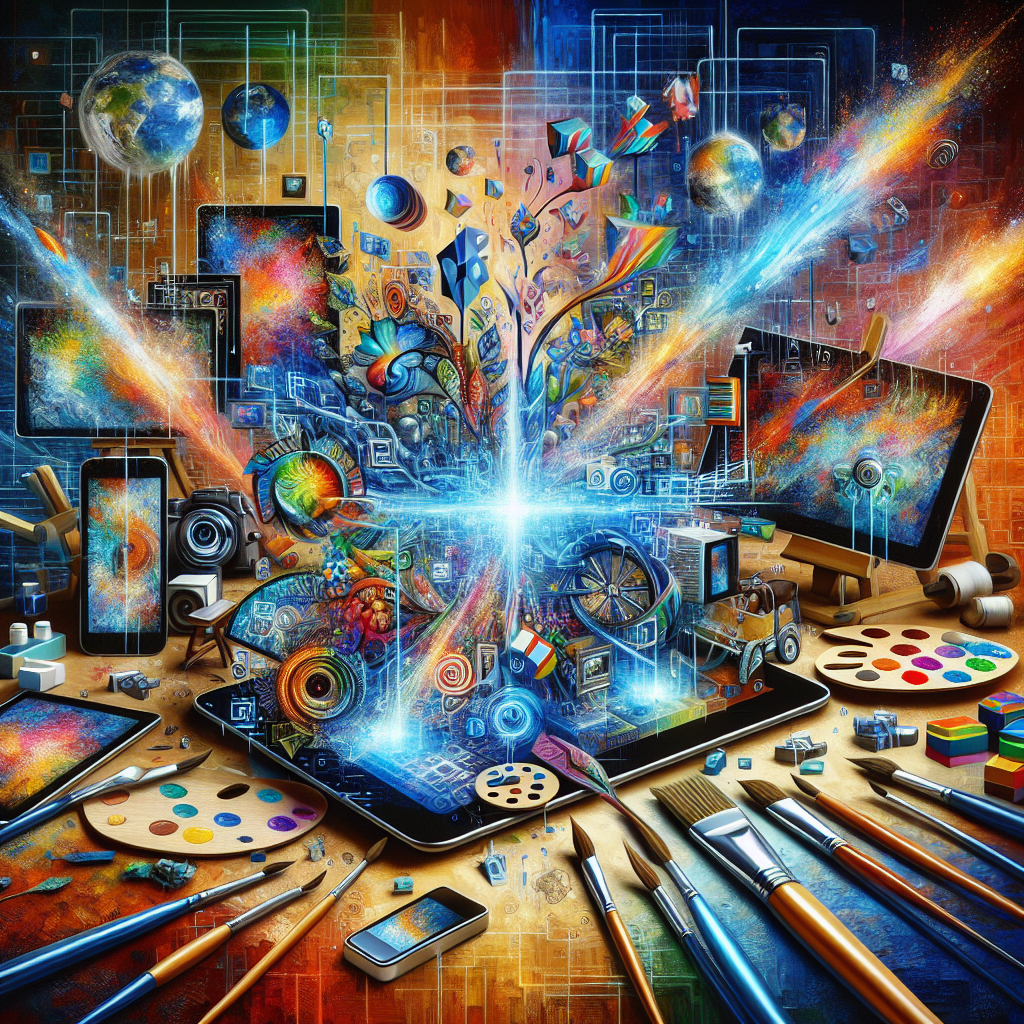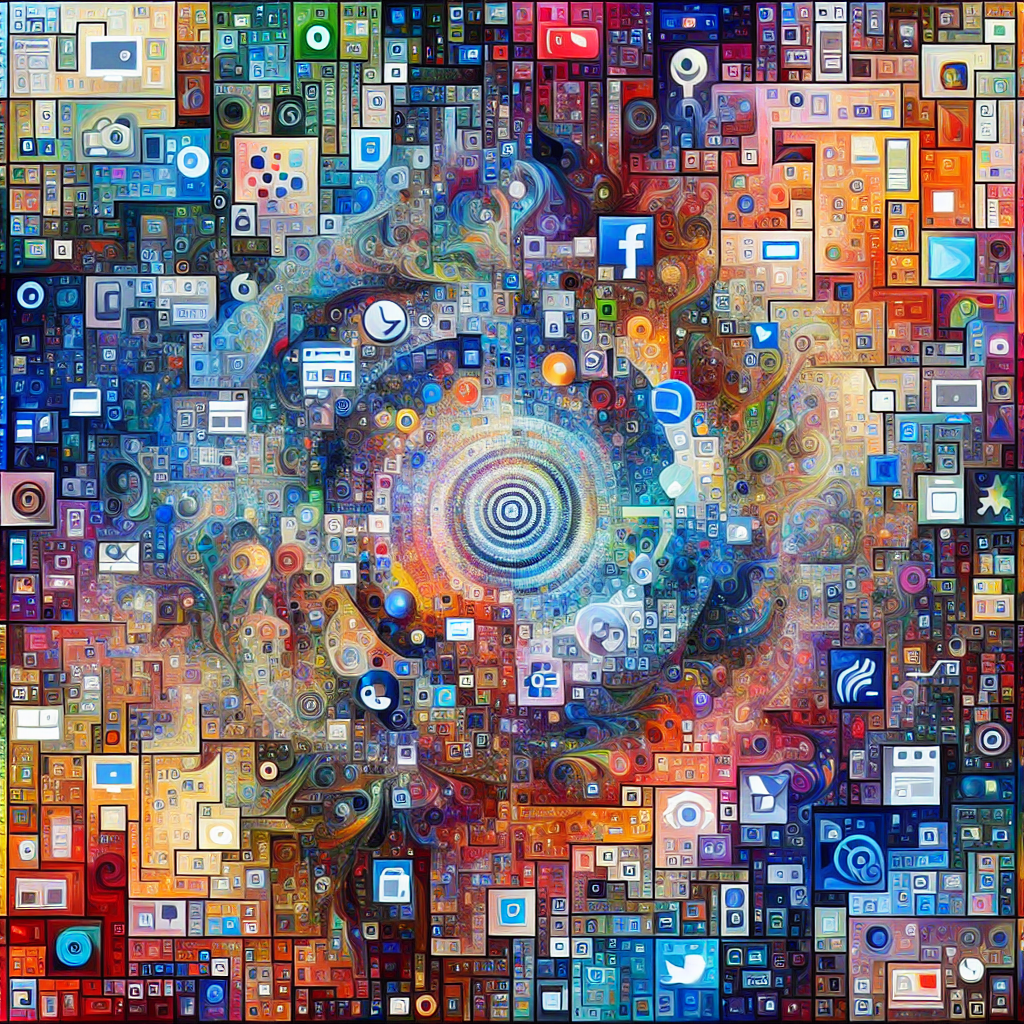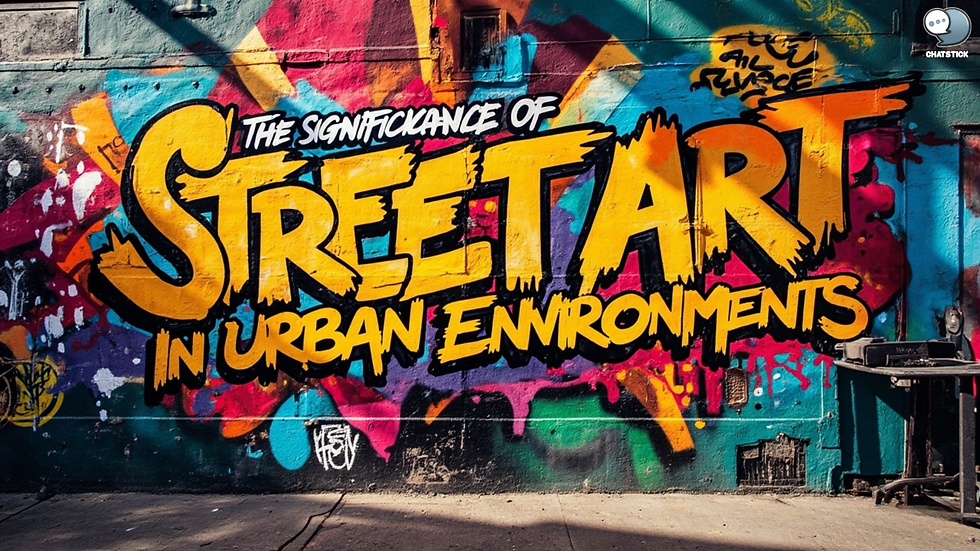How Internet and Social Media Revolutionized the Art World: A Modern Perspective
- ChatStick For Brand
- Aug 19, 2024
- 4 min read

In a society where the lines between virtual and physical realities blur more each day, the art world has undergone a profound transformation. The emergence of the internet and social media platforms has not only connected artists and art enthusiasts globally but has also reshaped the way art is created, shared, and experienced. The digital age has opened up a myriad of possibilities for artists, allowing them to experiment with new mediums, techniques, and forms of expression that were previously unimaginable. Artists are now able to transcend traditional boundaries and explore the intersection of art and technology in innovative ways. One of the most significant impacts of the digital age on contemporary art is the democratization of the art world. With the rise of online platforms and social media, artists no longer have to rely solely on traditional galleries and institutions to showcase their work. They can now reach a global audience with the click of a button, gaining exposure and recognition in ways that were once reserved for a select few. This democratization has led to a diversification of voices and perspectives in the art world, allowing for greater inclusivity and representation. Furthermore, the digital age has revolutionized the way art is consumed and experienced by audiences. Virtual reality, augmented reality, and other immersive technologies have enabled viewers to interact with art in ways that were previously unimaginable. Artists are now creating interactive installations, digital experiences, and multimedia artworks that engage the senses and challenge perceptions of space and time. This evolution in art consumption has not only enriched the viewer experience but has also sparked new conversations and dialogues around the role of technology in shaping our understanding of art and culture. In conclusion, the digital age has had a profound impact on contemporary art, reshaping the way artists create, share, and experience art. By leveraging technology and pushing the boundaries of creativity, artists are forging new paths and redefining what it means to be an artist in the 21st century.
The Digital Canvas: Art in the Age of the Internet
Gone are the days when art was confined to galleries and museums. The digital revolution unlocked a vast virtual canvas where artists can showcase their work to a global audience with just a few clicks. Platforms like Instagram, Pinterest, and DeviantArt have empowered artists to bypass traditional gatekeepers and directly connect with art lovers worldwide. This newfound accessibility has democratized the art world, allowing emerging talents to gain exposure and recognition that was once reserved for a select few.

From Likes to Impact: Social Media Influence on Art
Social media has become more than just a tool for self-promotion; it has become a driving force behind artistic movements and trends. The instant feedback loop provided by platforms like Twitter and Facebook allows artists to engage with their audience in real-time, fostering a sense of community and collaboration. Hashtags like #ContemporaryArt and #DigitalArt trend daily, serving as virtual galleries where art enthusiasts can explore a diverse array of artistic expressions.
A New Dawn of Creativity: Harnessing Technology for Artistic Innovation
The integration of technology into art creation has opened up exciting possibilities for artists to experiment and innovate. Digital art, virtual reality installations, and interactive web experiences are just a few examples of how artists are pushing the boundaries of traditional art forms. Augmented reality artworks that come to life through smartphone apps and AI-generated art pieces challenge our perceptions of what art can be, blurring the distinction between the physical and digital realms.

Navigating the Digital Landscape: Challenges and Opportunities
While the internet and social media have revolutionized the art world, they also present unique challenges for artists. The ease of digital reproduction raises questions about authenticity and ownership, with debates around digital rights and copyright infringement becoming increasingly prevalent. Additionally, the algorithm-driven nature of social media platforms can impact the visibility of artists' work, prompting them to adapt their strategies to navigate the ever-changing digital landscape.
Embracing the Future: The Evolution of Art in a Digital Age
As we embrace the digital age and its impact on contemporary art, one thing is clear: the possibilities are endless. Artists are continuously exploring new mediums, technologies, and platforms to express their creativity and connect with audiences in ways previously unimaginable. By harnessing the power of the internet and social media, the art world is undergoing a renaissance, inviting us to reimagine art not as a static entity but as a dynamic, evolving conversation that transcends borders and boundaries.

In conclusion, the internet and social media have not only revolutionized the way art is created and consumed but have also democratized access to artistic expression. As we navigate this digital landscape, let us celebrate the diverse voices and visions that shape the contemporary art world, reminding us that art knows no bounds and flourishes in the interconnected web of the digital age.
So, let us embrace this new chapter in art history and witness the endless possibilities that emerge when creativity meets technology in the ever-evolving canvas of the digital world.






Comments